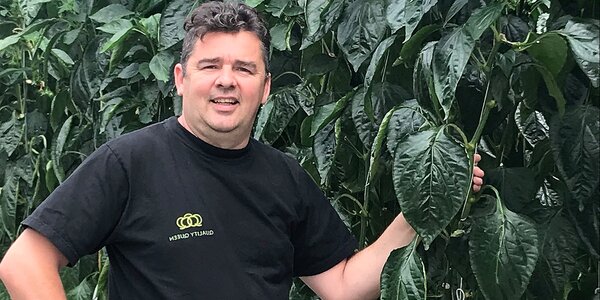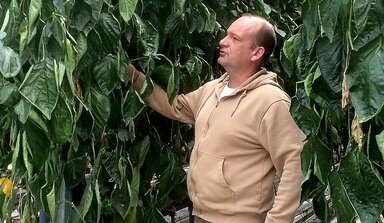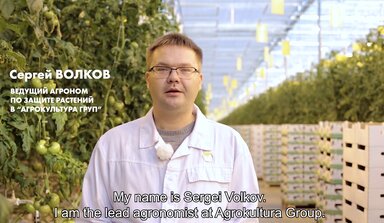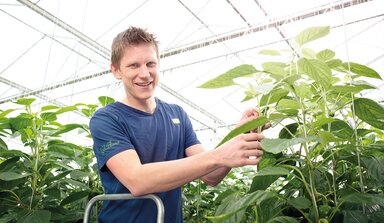Calm in the nursery thanks to ReduFuse
On some days, sunshine is interspersed with clouds all the time. ‘Then you have to constantly make the choice of closing the shading or not. With ReduFuse, the nursery is much calmer.’
Bell pepper growers frequently have different opinions about the benefits of diffuse coating. ‘In our excursion group, half uses it and the other half does not. The latter group says that it takes some light away in April. The former group feels the benefits outweigh that. We see no negative effects in April,’ says Wibo Valstar.
Together with his brother Ewout, he has two companies in De Lier with a total of 6 hectares, both used for growing green peppers. They have been using ReduFuse for six years now.
‘We started using it to cool down the head of the plant and the fruits in summer to prevent tip rot. Meanwhile, we have switched to a different variety, Overture, which is intrinsically less sensitive to tip rot. So we are unable to make a straight comparison with the previous situation,’ he says. ‘However, we are certain that it makes a difference in the number of shading hours. Above 650 Watt, the fixed shading always closes - but what to do on a day of intermittent clouds and sunshine? Then you continue to review and consider the best choice. ReduFuse eliminates that dilemma. This gives you peace of mind and calm in the greenhouse. This is certainly a major advantage in the weekends.’

Wibo Valstar
Even greenhouse climate
ReduFuse distributes the light through the greenhouse, creating an even climate. The light also penetrates deeper into the crop. This means the head of the plant receives lower irradiation and the leaves in the bottom can better contribute to photosynthesis. Another major benefit is that it eliminates sun spots. In particular in such sun spots, the stress quickly increases. The skin pores close up, decreasing CO2 absorption and decreasing photosynthesis. The crop is less active.
‘We can keep the air windows on the wind side further shut under the diffuse coating. This keeps more CO2 in the greenhouse and humidity higher. Plants like that better,’ says Valstar.
Minimum pipe
They have the coating applied in early April. ‘Better two weeks early than one week late. In spring we transition from dark to light weather, and this gives the crop some stress. Under the coating, the transition is more gradual. If you are too late in applying the coating, you will have a situation where you continually need to close the fixed shading,’ he says.
He recognises that early on, reduced irradiation takes some adjustment. In the morning, they need some more heat. ‘We bring the temperature of the minimum pipe up by 2 to 3°C. You have to put some energy in. But we have no problems with that. The benefits far outweigh that.’
A special point of attention is the direct sunlight falling through the open air windows. These are reflected with the double shading, one of which must be closed by 20% and the other by 10%.
In late August the coating is removed from the greenhouse roof. The decision is based on the number of small fruits of that time; these are vulnerable. If there are many, the ReduFuse stays on the roof a week longer. The weather forecast also plays a role.
‘We are pleased with this approach. This allows us to better control the greenhouse climate and deliver top-quality peppers,’ he says.


